Bob Hoover was a living legend of aviation, and one of the greatest aerobatic pilots we’ve seen.
“Bob Hoover is the greatest stick-and-rudder man who ever lived.”
In the annals of flight, few names have left such a lasting impression as Robert A. “Bob” Hoover. He has been recognized and praised by some of the top pilots worldwide. With a career that spans over 7 decades, he has inspired and instructed many pilots. His daring exploits demonstrated to trainee pilots how responsive their aircraft could be, and gave them the confidence to deal with tough situations.
During his stellar career, Hoover was no stranger to controversy. On several occasions, attempts were made to ground him, citing his eyesight as a reason to deny his license. In all such cases, he was able to overturn the decision, gaining support from sympathetic doctors and medical examiners and demonstrating his extreme competence and skill. On another occasion, he would be denied the opportunity to make a historic test flight due to breaking safety rules in order to impress a crowd of civilians with his aerial stunts. It was clear that Hoover was a man who played by his own rules and didn’t take to restrictions kindly. But then, it’s also clear that he was a supreme pilot, and his judgment was proven sound time after time.
His contributions to aeronautics continue to this day. His advice for dealing with forced landings are responsible for averting disasters, and the fuel safety system which bears his name is required equipment at airfields all over the world. He has lived a life that was bigger, more thrilling and dazzling than fiction. He has been the subject of biographies and documentaries.
Bob Hoover: The Early Years
Born in 1922, Bob would learn to fly at the tender age of 15. He paid for his own lessons using his wages as a humble grocery clerk.
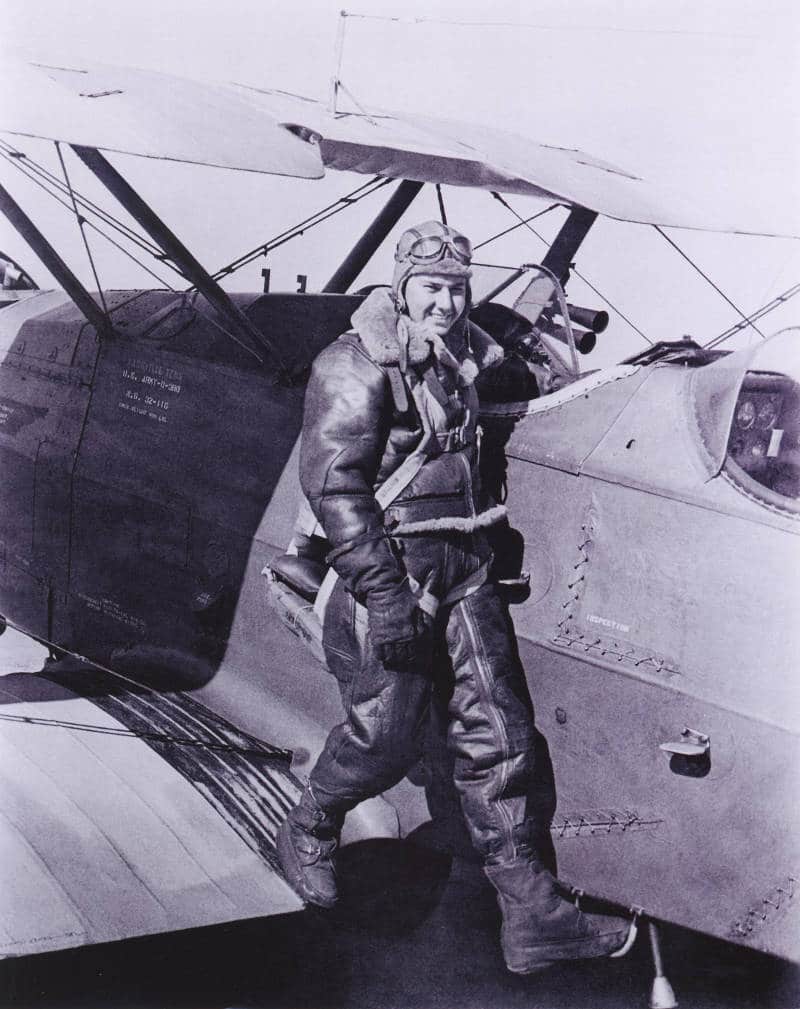
His eventual mastery of flight enabled him to perform stunts that would kill lesser pilots, and secure his eternal fame as one of the all-time greats. But this wasn’t the result of some inbuilt instinct or natural talent. He learned these skills by constant practice, and he was driven by necessity to overcome an obstacle that could have ended his pilot career before it began.
Despite his great enthusiasm, his early experiences were not without mishap. At first, he struggled with nausea, but instead of quitting he forced himself to push through it. In order to overcome his aversion, he would continuously practice stomach churning maneuvers. He practiced chandelles, loops, spins and rolls. As a result, he became an expert at aerobatics and cured his nausea. It was this skill which would enable him to excel in the many different branches of his professional career: as a test pilot, a combat pilot, and later as a show pilot.
It also provides us with an insight into the character of the man. When faced by a challenge that would have led lesser pilots to quit, he drove himself to overcome it and won through rugged persistence.
Bob Hoover in the Military
Later, he would enlist in the Tennessee National Guard, and train for air combat. Although at first, they trained him as a rear gunner. He was not allowed to train as a military pilot because he wore glasses, and at that time army pilots were required to have 20/20 vision. But his natural talent for flight would not be held down for long. With the collusion of a doctor who saw his potential, and “just had to step out of the room” before administering the eye test (but after pointing out the eye chart) he was able to pass the eyesight test.
And so he was sent to train with the army as a pilot. While there, he would end up training his instructors more than they had to teach him.
Upon graduating, he was sent to Casablanca to work as a test pilot. Flying several missions every day, he rigorously tested all of the aircraft that were assembled or repaired there. During this time, he would meticulously test every fighter and many of the bombers before they were sent to the front-line.
Eventually, he transferred to the 52nd group, based in Sicily, flying Spitfires in combat missions. During a dogfight off the coast of France, he was pitted against 4 Luftwaffe Folke-Wulf 190 fighters. Amazingly, one of them managed to shoot down Hoover. Years later, Hoover learned that the pilot who shot him down was flying an aircraft with some of the guns and ammunition removed so he had a lighter plane. This was because the pilot was a crack shot, and figured he didn’t need as much firepower to get the job done. The lighter plane allowed for more maneuverability, which led to the pilot being up to keep up with Hoover during the dogfight. According to Hoover, this Luftwaffe pilot shot down over 70 aircraft during World War 2. He then spent 16 months as a prisoner in Barth, Germany. But his spirit was not crushed, and he managed to escape. Capturing an FW190 from under the enemy’s nose, he flew to Holland and freedom.
When the war ended, he “retired” to a life as a military test pilot. Flying out of Muroc Dry Lake, he flew several prototype jet and rocket-powered aircraft. It was during this time that he suffered leg injuries which trouble him to this day, due to a defective ejector seat (one of the first ever made).
Nonetheless, he quickly recovered and continued to test top secret experimental craft, including the Bell X-1. However, he missed out on his opportunity to make the historic sound-barrier breaking flight in 1947 due to a little disagreement with the top brass. It seems they didn’t appreciate his stunts when he made a low pass over civilians as a special favor to a friend. Instead, his good friend Chuck Yeager would fly as his replacement and would get his name immortalized for the feat.
(The Air Force X1 team, from left to right: Lt. Edward Swindell (B29 flight Engineer); Lt. Bob Hoover (X-1 backup pilot and chase pilot; Maj. Bob Cardenas (officer-in-charge and B29 drop pilot); Capt. Chuck Yeager (X-1 Pilot); Dick Frost (Bell X-1 Project Engineer and chase pilot) and Capt. Jackie Ridley (Air Force X-1 project Engineer).
Bob Hoover: Test Pilot and Showman
Realizing that his military career was nearing its end, Bob Hoover made the move to work as a civilian test pilot with Allison Engine Company. From this point, he would move to North American Aviation, testing navy aircraft such as the T-28, F-86 Saber jet, and many others. Following this illustrious career as a civilian test pilot, he would next become a showman. In fact, it is his air show career for which he is most remembered.
This all began when he was hired to demonstrate the nimble flight characteristics of the Shrike Commander, built by Aero Commander. The aircraft was a twin piston-engined civilian crate, aimed at top businessmen. Its bulky profile had earned it a tame reputation which he felt was not deserved, and so he set out to prove its true character with a series of daredevil stunts.
This demonstration would see him putting the aircraft through a series of rolls, loops, and other hair-raising maneuvers which were a million miles away from its staid image. As if this hadn’t made enough of an impression, he would turn the engines off for the last part of the exhibition. He would then put the plane through a loop and an eight-point hesitation roll. Then he would head back to touch down, first on one tire, then the other. Finally, after landing, he would switch the engines back on in order to taxi back and park the craft.
After this display, there would be little doubt in the minds of the audience concerning the power of the craft or the skill of its pilot. And so it was that Bob Hoover was to enter the longest phase of his professional career, as a top-billed air show pilot touring from coast to coast.
Throughout the 1960s, Hoover would fly a P-51 Mustang at airshows all over the country. The first Mustang (N2251D) was bought in 1962 from the Cavalier Aircraft Corporation. This plane was finally destroyed in an accident on solid ground. The accident was caused by an exploding oxygen bottle. A second mustang named “Ole Yeller” was purchased to replace it in 1971. Hoover would continue flying the Mustang and the Aero Commander at airshows for decades until his retirement.
During this time, he would tour the world, which would lead to a chance encounter with another legend of flight. In Germany, he would meet with a shadowy character who called himself “Mr. Schwartz.” In actual fact, Schwartz was Charles Lindbergh. Lindbergh had been living as a recluse for decades following the personal tragedy which had accompanied his meteoric rise to fame. Striking up a friendship with Lindbergh, Hoover encouraged him to attend a meeting of the Society of Experimental Test Pilots (an organization which Hoover presided over). It was at this meeting that Hoover introduced Lindbergh to Neil Armstrong and other astronauts. Lindbergh received a much-deserved standing ovation from the astronauts and test pilots who were in attendance.
Toward the end of his career, the Federal Aviation Administration revoked his medical certificate, effectively grounding him. He was able to get this decision overturned, and in the meantime was able to get a license and medical certificate in Australia. He made a strong case for his fitness to fly, citing his handling of a T-28 with a failing engine off the coast of California. In order to keep the craft in the air, he had to delicately juggle the throttle, propeller lever, and mixture. The engine survived right up to the moment he landed. Clearly, this was a feat that proved his fitness to fly. He returned to show flying and continued for several years.
Hoover retired himself from show flying as he began to feel that his performance was no longer at the peak level required for his daredevil stunts. He felt that his precision was drifting and that he could lose control of the aircraft if he continued performances. He continued to fly until the age of 85 when he made the decision to permanently ground himself.
But Ole Yeller’s career is far from over. In 1997, Hoover sold the aircraft to a close friend, John Bagley. Yeller still flies at shows from time to time, and between performances can be found resting at the Legacy Flight Museum in Idaho. Likewise, Hoover’s Shrike Commander has taken up residence in the Udvar-Hazy Center in Virginia.
Bob Hoover’s Legacy
During his career, Bob Hoover has collected many records, awards, and medals. He has rubbed shoulders with and been counted amongst the greatest names in aviation, from Orville Wright to Neil Armstrong. He has been described in glowing terms, as a Pilot’s Pilot and even as “the greatest pilot to have lived.” But his legacy goes beyond mere records and recognition. To this day, his contribution to air safety is saving lives in airfields all over the world.
This goes back to a fateful incident in 1989, which almost cost him his life. Hoover was flying his Shrike Commander with a couple of thrill-seeking passengers at an airshow in San Diego. The engines cut out at 300 feet during take off, and Bob was able to land the craft by the skin of his teeth. It was a rough landing on the side of a ravine, and the plane was damaged, but Bob and his passengers were able to walk away, alive but injured.
As they sat on the hillside, waiting to be rescued, Bob examined the plane to learn what had caused the failure. He discovered that the ground crew had filled it with jet fuel instead of aviation fuel. They had mistaken his plane for a turbo-prop. It had been able to take off with the remaining aviation fuel in the engine and fuel line, but as soon as the jet fuel reached the engine, it cut out.
He realized that this mistake could very easily have cost him his life, and he was determined to do something about it. His solution was to develop a fueling system which would prevent such mis-fueling from occurring in the future and to campaign to get it adopted widely.
The system consists of a bell-shaped nozzle on jet fuel pumps (named the Hoover Nozzle). There is a matching ring inserted in the filler neck of planes that need aviation fuel – the ring prevents the jet fuel nozzle from attaching. It’s a simple but effective measure which is used everywhere now, and it’s prevented similar accidents from occurring. It’s impossible to know just how many pilots, crew and passengers the Hoover system has saved, but there are doubtlessly many who are alive today because of this invention.
To this day, Hoover continues to speak publicly concerning his experiences and career. He is a charming, influential and popular speaker, and a continued inspiration to current and future generations of aviators.
SIDENOTE: If you have a spare hour or so, the Smithsonian had Bob Hoover present the ‘Charles A. Lindbergh Memorial Lecture’ back in May of 2010, and it’s a great watch. I’ve embedded the video below. Hoover shares a lot of great stories, including meeting Charles Lindbergh, learning to fly and finding out about the pilot who shot him down in World War 2. Well worth your time.
Editor’s Note: Sadly, since the writing of this article, Bob Hoover passed away on October 25, 21016 at the age 94 years old.






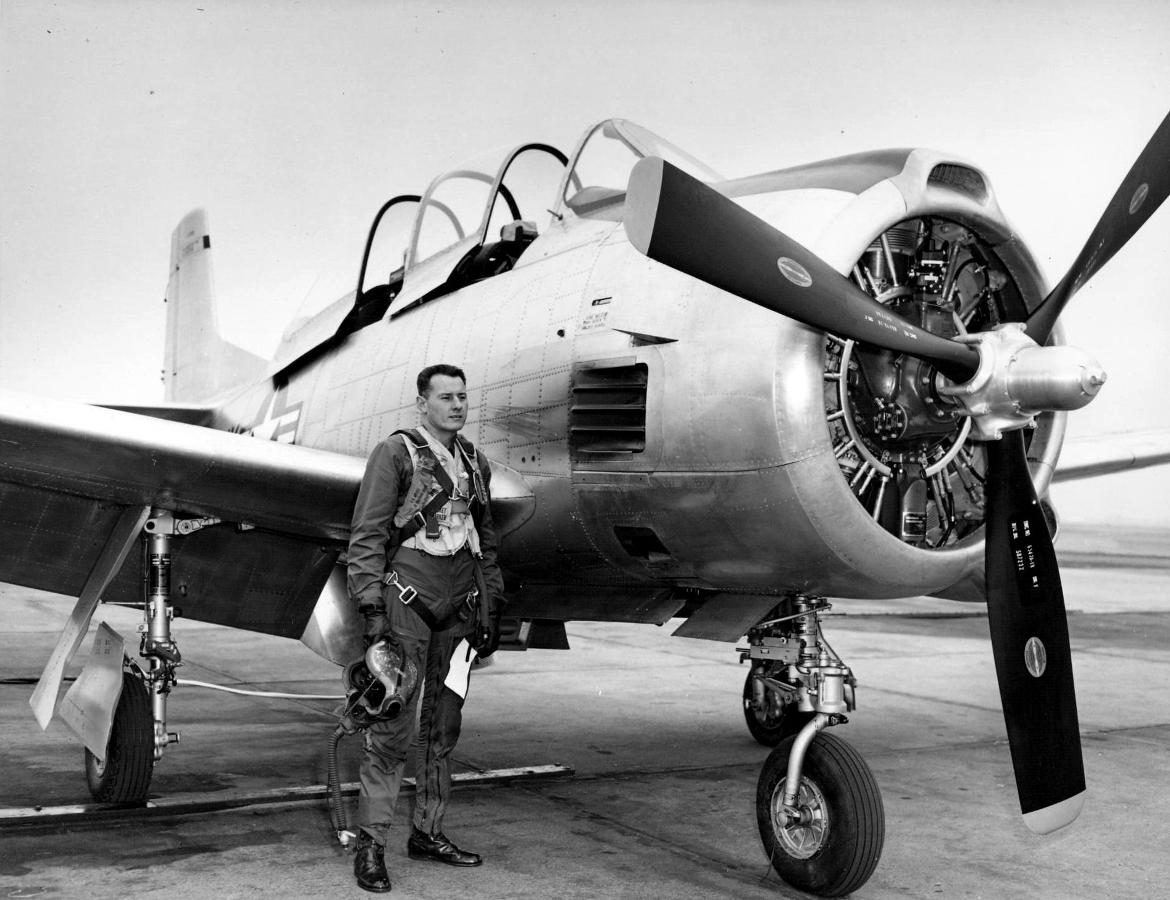

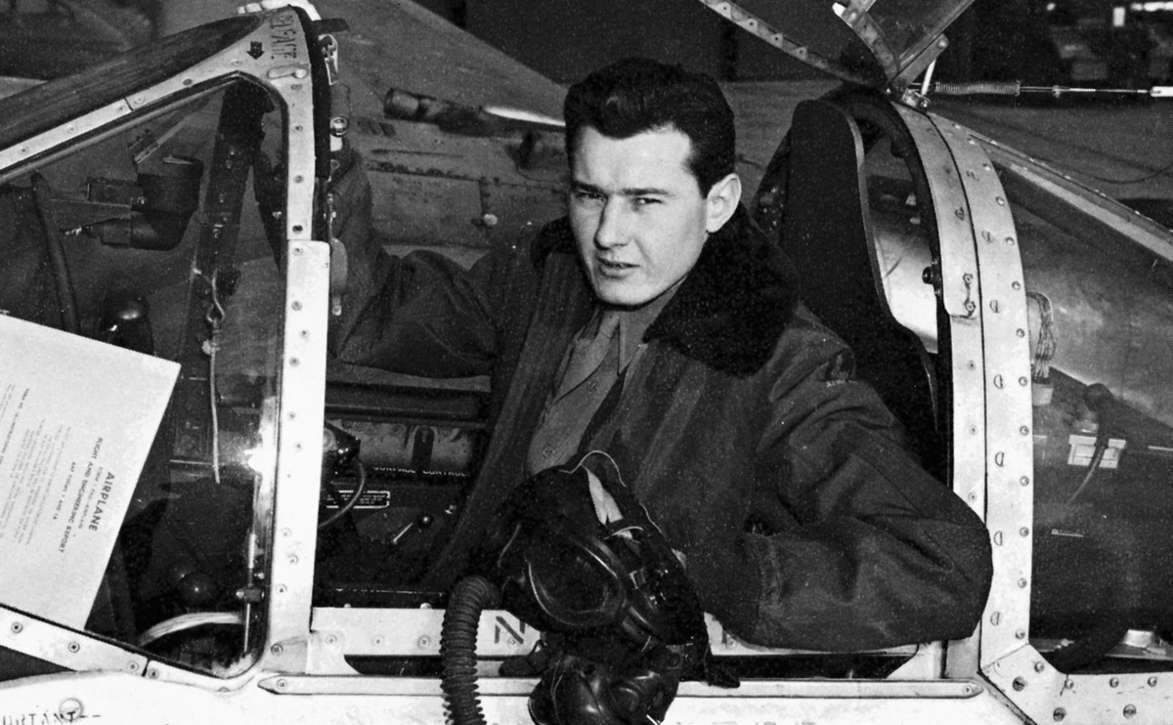
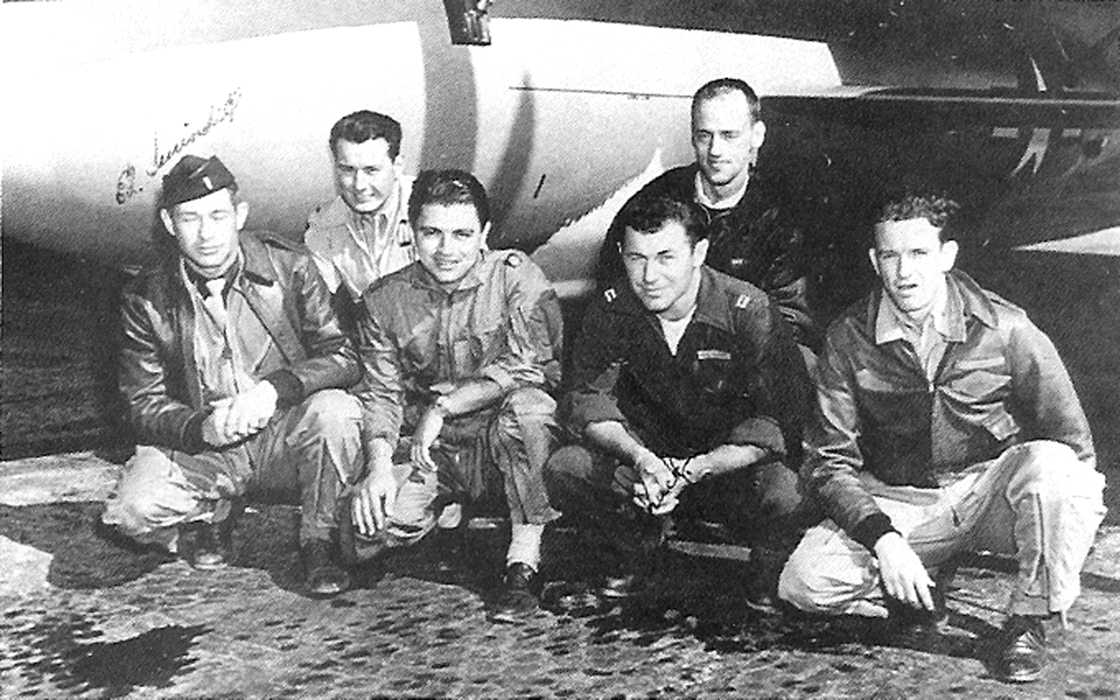
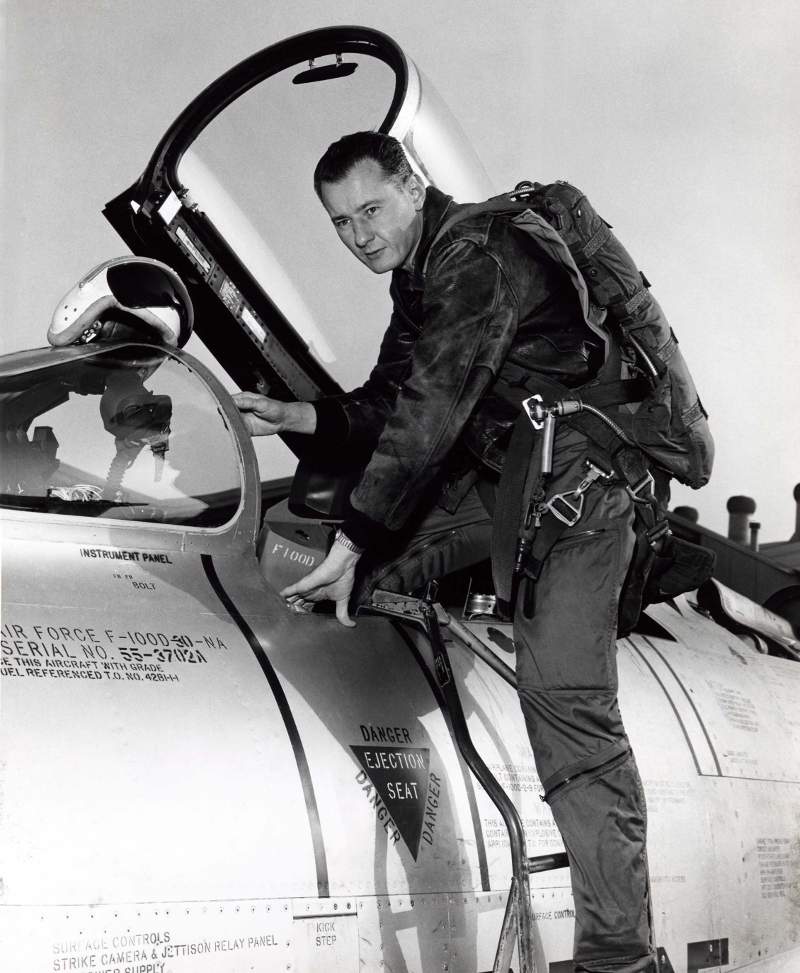







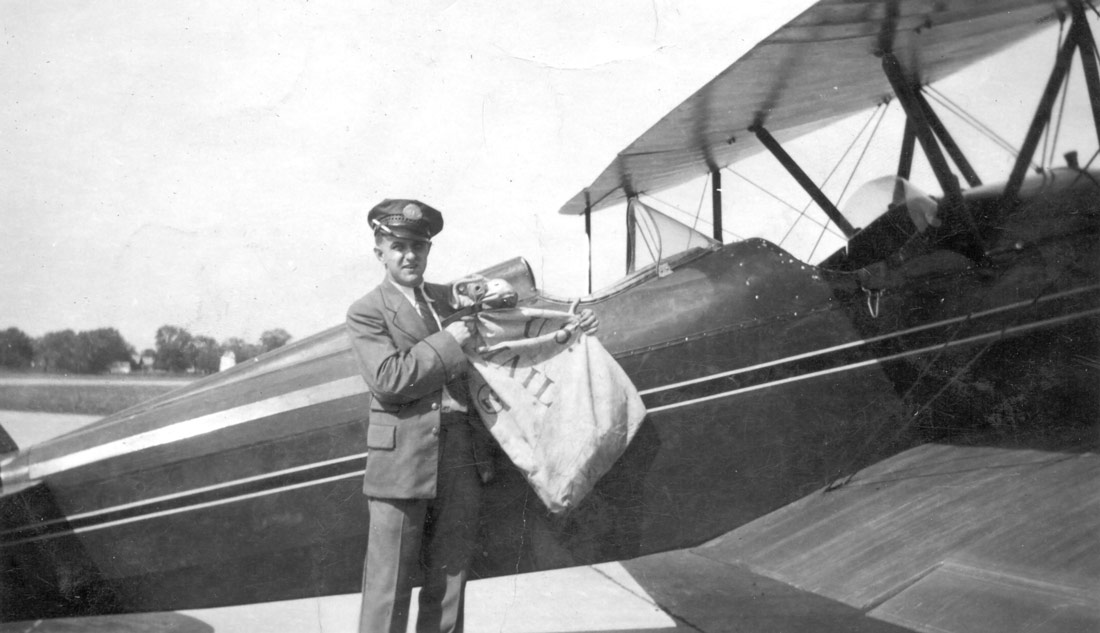
Leave a Reply